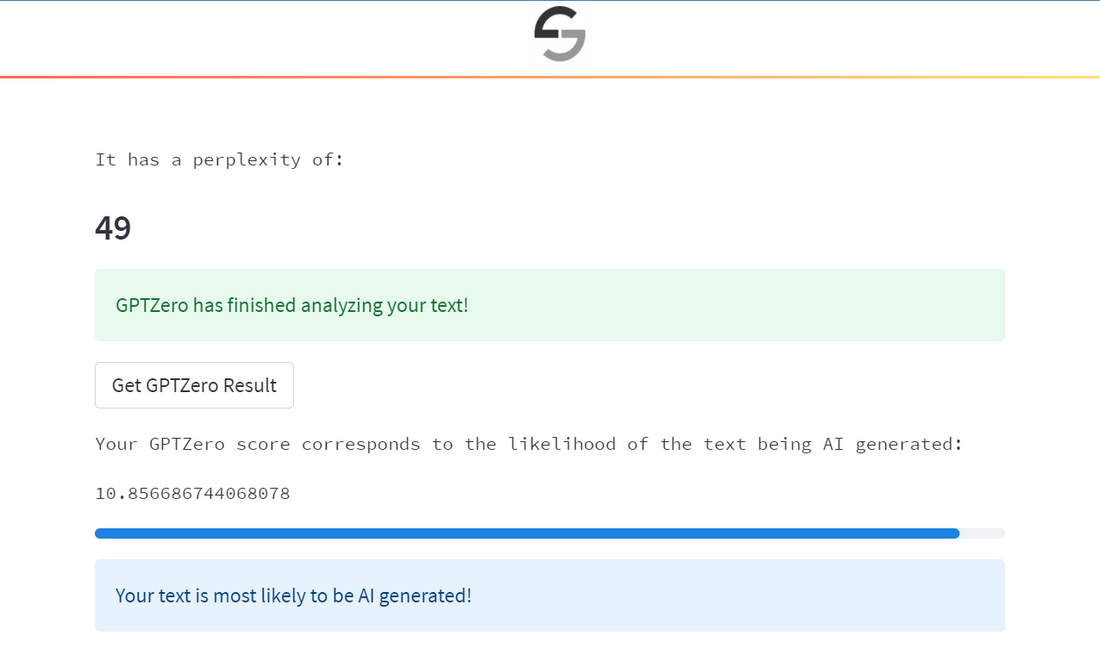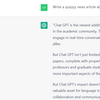A college student built an app to get an AI-written text: NPR


GPTZero in action: The bot gets AI-written text right. Submitted writing sample? ChatGPT Test “An article on the ethics of AI plagiarism that can bypass ChatGPT’s detection tool”.
GPTZero.me/screenshot by NPR
Hide description
Change caption
GPTZero.me/screenshot by NPR

GPTZero in action: The bot gets AI-written text right. Submitted writing sample? ChatGPT Test “An article on the ethics of AI plagiarism that can bypass ChatGPT’s detection tool”.
GPTZero.me/screenshot by NPR
Teachers now have a new tool of their own as students turn in texts written by the popular artificial intelligence chatbot.
Edward Tian, a 22-year-old senior at Princeton University, built an app to determine whether a text was authored by chatgpty, a viral chatbot that exposed unethical use in academia.

Edward Tian, a 22-year-old Princeton computer science student, created an app that finds essays written using the amazing AI-powered language model ChatGPT.
Edward Tian
Hide description
Change caption
Edward Tian

Edward Tian, a 22-year-old Princeton computer science student, created an app that finds essays written using the amazing AI-powered language model ChatGPT.
Edward Tian
Tian, a computer science major with a minor in journalism, spent part of his winter break creating GPTZero, which he says can “quickly and efficiently” solve whether a person or chatGPT is writing an essay.
He was inspired to create the bot to combat what he sees as the rise of AI plagiarism. After ChatGPT was released in late November, there have been reports of students using the language model to pass off AI-written assignments as their own.
“So much chatgpt hype is going around. Is this and that written by AI? We as humans need to know!” Tia wrote on Twitter Introducing GPTZero.
Tian said that many teachers reached him after him. He released his bot online. On January 2, they will tell you about the positive results they have seen by trying.
Within a week of its launch, over 30,000 people had tried GPTZero. It was so popular that the app was disabled. Streamlit, the free platform that hosts GPTZero, has stepped in to handle Tia with more memory and web traffic.
How GPTZero works
GPTZero uses two indicators to determine whether a snippet is written by a bot: “confusion” and “explosiveness”. Confusion measures the complexity of the text; If GPTZero is confused by the text, it has higher complexity and is more human-written. However, if the text is more aware of the site – because it has been trained on such data – then it will have lower complexity and therefore be more likely to be generated by AI.
Separately, the gap compares the differences of the sentences. People tend to write longer or more complex sentences with shorter sentences, for example. AI sentences will be more similar.
In a demo video, Tian compares the app’s history to analytics in new york And a LinkedIn post written by ChatGPT. He distinguished between human and AI writing successfully.

Tian admits that his bot isn’t foolproof, as some users have reported trying it. He said he is still working to improve the model’s accuracy.
But by designing an app that sheds some light on what separates humans from AI, it helps Tian accomplish his core mission: bringing transparency to AI.
“For a long time, AI is a black box where we don’t really know what’s going on inside,” he said. “And with GPTZero, I want to push back and start fighting that.”
AI efforts to prevent plagiarism

The college senior isn’t alone in the race to crack down on AI-like behavior and plagiarism. OpenAI, the developer of ChatGPT, is committed to preventing AI plagiarism and other malicious applications. Last month, Scott Aaronson, a researcher who currently focuses on AI security at OpenAI, revealed that the company was Working on the way to the “water mark”. GPT-generated text with an “unknown secret symbol” to identify the source.
Open source AI community He took out a hug face tool. To find out if text is generated by GPT-2, the previous version of the AI model used to make ChatGPT. A philosophy professor in South Carolina discovered the device by accident. He said he used it. To catch a student submitting a paper written by AI.
The New York City Department of Education announced on Thursday that it is restricting access to Chat GPT on school networks and devices due to “negative impacts on student learning and concerns about the security and integrity of content.”
Tian is not against using AI tools like ChatGPT.
“GPTZero is not intended to be a tool to prevent these technologies from being used,” he said. But with any new technology we must be able to accept it responsibly and have safeguards in place.
We offer you some site tools and assistance to get the best result in daily life by taking advantage of simple experiences
